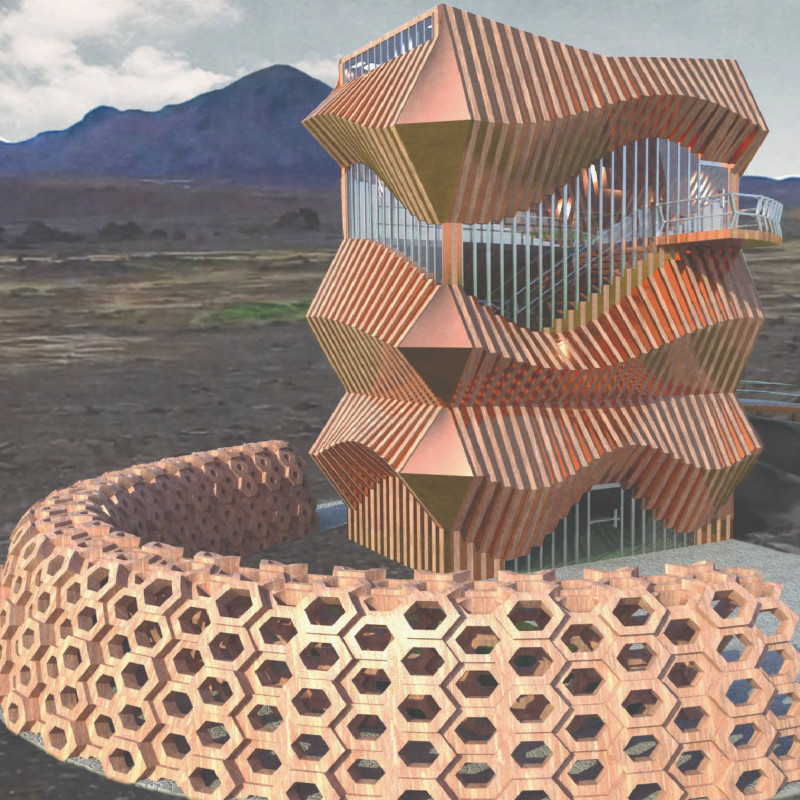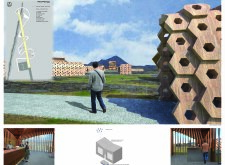5 key facts about this project
The design engages with the breathtaking geological landscape of Iceland, taking advantage of its flat terrain to create a dialogue between the built environment and the surrounding mountains. The project enhances visitor experience through a series of connected program spaces organized around an open-air corridor. This concept emphasizes movement, guiding people from the Welcome Center to the observation tower while framing the beautiful scenery.
Observation Tower
The observation tower stands as the main feature of the design, oriented along an axis with Hverfjall volcano. It encourages exploration, drawing visitors toward it and strengthening visual connections to the landscape. The structure has multiple viewing platforms at different heights, allowing expansive views of the natural scenery. The upper level is mostly open, providing clear sightlines that capture the area's striking features.
Open-Air Corridor
The open-air corridor acts as a connecting pathway throughout the site. It has a cavelike quality that guides circulation, with dome-shaped walkways and hexagonal openings that create an interesting route. The arrangement and size of these hexagons reflect characteristics of basalt, immersing users in the natural environment as they move between different areas.
Program Spaces
Distinct program spaces are integrated into the design, each offering unique experiences for visitors. These include the Welcome Center, observation platforms, a bathhouse, and a café. The careful arrangement of these spaces ensures a smooth flow throughout the site. The corridors not only serve as pathways but also link each area to the surroundings, keeping users engaged with the geological context.
Materiality and Detail
The choice of materials used in the design reflects the natural features of the region. The observation tower’s façade comprises wooden panels capped with polished copper. This selection highlights the theme of geological interpretation, as the façade mimics the area's tectonic activity. Such details reinforce the structure's connection to its environment, resulting in a design that resonates with the landscape it occupies.






















































